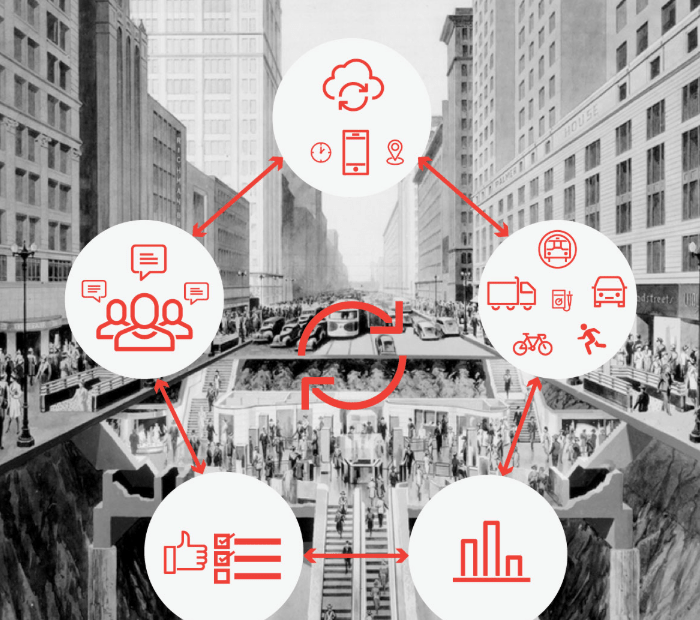I recently had the pleasure of sitting down with Priya Prakash, founder of D4SC (Design for Social Change), who is a visionary on the intersection of design, technology, and sustainability. What unfolded was a wonderful conversation touching on everything from her early design education in India to her work with global brands like BBC and Nokia, her leadership in systems thinking, and her role as the jury president for the D&AD Awards.
We discussed the nuanced challenges of designing for a sustainable future, what it means to build trust in AI, how to create digital tools that foster curiosity and mastery, and why calmness and human connection must remain central in an increasingly tech-driven world. Prakash also reflected on the blind spots in sustainable tech, the political weight of typography, and the role of design awards in advancing social innovation.
Our conversation offers a compelling look at how design can drive systemic change through inclusion, accessibility, and a commitment to creating not just usable but meaningful experiences.
You studied design in both India and the UK. How has that shaped your perspective on sustainability and inclusivity?
My time at NID in India grounded me in systems thinking and design for the masses. Then, at the Royal College of Art, I was exposed to a more experimental, conceptual approach. I see design not just as problem-solving, but as a medium for cultural translation. Whether you’re designing a font or a system, it’s about connecting cultural insights, technical solutions, and human needs. That’s especially important when we talk about sustainability—it’s not one-size-fits-all.
You mention systems thinking. How do you define that in your practice?
Systems design is guided by three core principles: inclusivity, universal design, and business integration. You can’t design sustainably if the solutions aren’t accessible or scalable. That’s why working with big players—like BBC or Nokia—matters. If we can embed sustainability into mainstream processes, it becomes the default, not the exception.
Are there blind spots the design industry needs to confront when it comes to sustainable tech?
Absolutely. One big one is cultural nuance in trust and privacy. In Dubai, for instance, there’s a very different perception of data use than in Europe. We talk a lot about “designing for trust,” but I think it’s more about designing for confidence. People need to understand what’s happening, especially with AI and automation. Explainability is crucial. We need new visual and narrative languages to make algorithms comprehensible.
We need new visual and narrative languages to make algorithms comprehensible.
What does “designing for confidence” mean, practically speaking?
It means creating affordances that help users feel a sense of mastery. Think about how software used to teach you—those early mental models are vanishing. When users feel in control, curiosity blooms. Without that, tech becomes alienating. Designing for confidence is really about making people feel capable again.
You also spoke about designing for calmness. What does that look like?
Calmness can come from ambient design—technologies that don’t scream for your attention. I’ve been exploring textiles that embed tech without the noise. But calmness isn’t only digital. Sometimes it’s as simple as walking barefoot in your garden. As designers, we must recognize the power of human interaction and analog moments in an overstimulated world.
As designers, we must recognize the power of human interaction and analog moments in an overstimulated world.
When asked what stood out to her the most this year, as a judge for D&AD Impact Award, Prakash spoke about optimism for the next generation, which includes students and entrepreneurs driving real change through cross-disciplinary collaboration and grassroots innovation. She emphasized that true impact goes beyond craft; it’s about legislative influence, sustainable business models, and long-term systems change. While big brands often play it safe, the most inspiring work came from those willing to take risks and stay committed well past the first campaign cycle.
My conversation with Prakash provided me a breath of fresh air with how she looked at design that can drive systemic change through inclusion, accessibility, and a commitment to creating not just usable, but meaningful experiences.
As Prakash reminds us, the path forward in sustainable design requires more than good intentions. We must build confidence into our interfaces through transparency and clear affordances. We need to apply systems thinking to weave sustainability across business, education, and design. Inclusivity and cultural nuance aren’t optional; they’re essential, especially in global contexts. And in a world of fast-moving tech, we must foster curiosity and calm through human-centered, tactile tools.
Most of all, designers must develop the discipline to question every decision, especially the ones that seem default. That’s where real change begins.
The post D4SC’s Priya Prakash on Designing for ‘Calm, Confidence, and Capability’ appeared first on PRINT Magazine.
